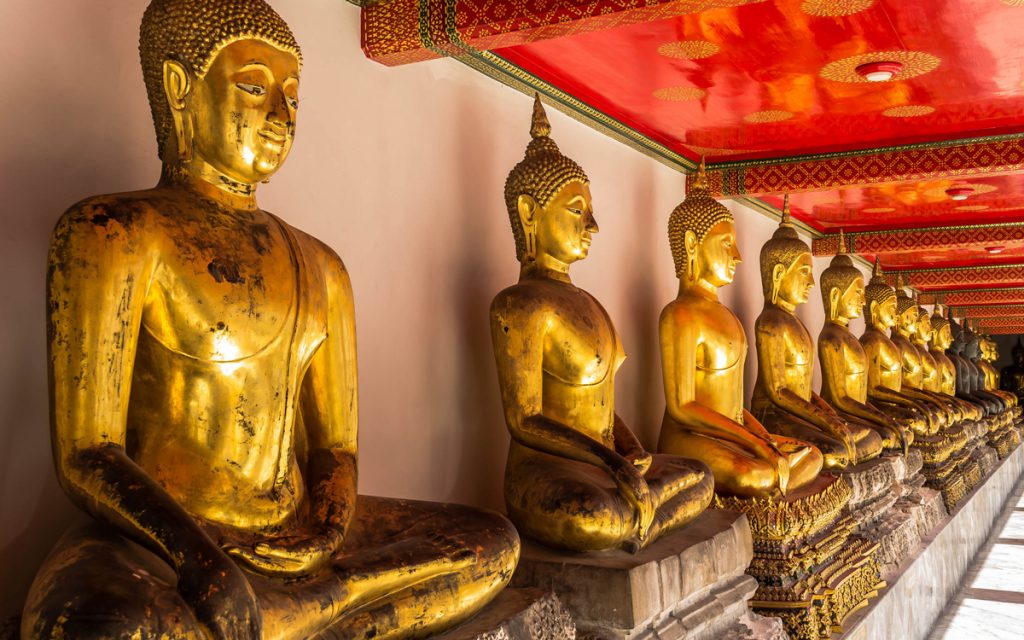(Meta)Physical Education is a series about the lessons that Alex Tzelnic, a Zen practitioner, has learned while teaching gym at a Montessori school. You can read more of Tzelnic’s stories here.
Remember that really wonderful meditation sitting, that time you gave up on trying to accomplish anything and just sat? The dignity of the posture revealed the openness and clarity of the moment. So this is it, you thought, even though the thought was almost imperceptible and more of a feeling. And you realized that all the violent swinging between the poles of strained effort and indulgent lassitude were distractions from the deceptively simple act of sitting up straight.
Now, remember the countless times you tried to replicate that recognition? Remember the yearning with which you tried to just sit, the strain with which you tried to not strain at all, the lethargy you tried to convince yourself was effortlessness? The poor imitation of that imperceptible thought you’d once had, so it now felt more like, is this it?
In practice we discover the slipperiness of replication. We want to rely on methods that are tried and true, but trying often reeks of desperation and truth is frustratingly relative. Even though sitting is the act of experiencing what is happening now, we wish to experience a different sitting, to replace the mystery of the moment with the comfort of a previous moment.
I’m going on nine years as a gym teacher, and during this time I have collected a stable of games that I can rely on. Hula Hoop Tag is beloved by all, a fun and frenzied jolt of pure action in which the “Its” try and get everyone out by kicking hula hoops at them. The hula hoops slide across the floor like circus-sized hockey pucks, and when you are out, you can get back in by jumping into the center of a sliding hoop. My older students have gotten so good at landing in the middle of a hula hoop skittering across the gym floor at 20 mph that if Hula Hoop Tag were an Olympic sport, we’d sweep the medal ceremony.
It can be tempting to rely on games that are a guaranteed source of exercise and enjoyment and that require almost no explanation or planning. Were I to tell the students that for the rest of the year, gym would be an intensive Hula Hoop Tag seminar, I’d likely be met with raucous applause.
If the point of gym were to sink further into well-worn grooves of comfort, this would be a perfectly acceptable approach. But it’s my job to push my students, and so, somewhat begrudgingly, I began this school year by trying something new. Of course, this required stepping into the unknown. It required me to introduce a game to my students that they’d never heard of, and to be met with quizzical frowns instead of cheers. It required both the students and teacher to explore new territory.
I think the result surprised us both. The game was a cooperative challenge, and it forced teams of five to reconstruct a pyramid made of five objects of varying sizes—a large gym mat, carpet square, yoga block, bean bag, and a wooden egg—in a new space on the other end of the gym. When I explained the game to one class a precocious boy raised his hand and said, “So this is like Tower of Hanoi?”
“Yes,” I said, sounding all-knowing, though I’d only heard about the Tower of Hanoi through researching this game, which another PE teacher blogged about since it was on the TV show Survivor.
The challenge did not last long. Once the students figured out the method, which simply required them to be mindful about the order and placement of the pyramid pieces. After that, it was only a matter of effort and speed. But the Tower of Hanoi required total absorption, cooperation, and problem solving. When they were done I commended them on their teamwork. It was a successful game, and one that can’t really be replicated, as the solution is now apparent.
What can be replicated, however, is the willingness to explore new ground—to treat gym not as an arena for repeating our successes but for achieving new ones. Sometimes a new game fails dramatically, resulting in boredom, tears, or quick and dull mastery. But even such failures are instructive and embody the Korzybski dictum—“the map is not the territory—and take us places we’ve never been.
One of the hardest things to remember about practice is that we’ve truly never before experienced this moment. We repeat the same action over and over and over again. It can be dull, it can be revelatory, and it can feel like we are merely replicating, or attempting to replicate, what has come before. And yet in repeating the act of sitting, we give ourselves a structure in which our strategies become obvious and our choices become simple. The option to sink into rote repetition, to play Hula Hoop Tag again, is tempting. But there is another option. In sitting, over and over again, we discover that we can always sit up straight, and we can always play something new.
Thank you for subscribing to Tricycle! As a nonprofit, we depend on readers like you to keep Buddhist teachings and practices widely available.
